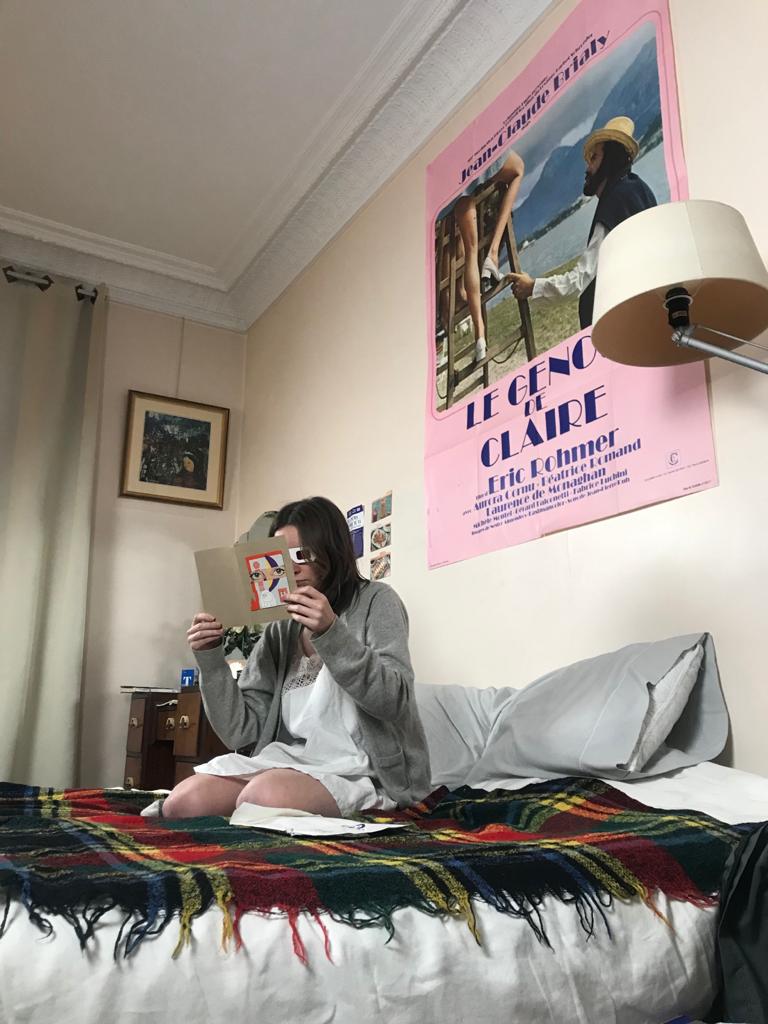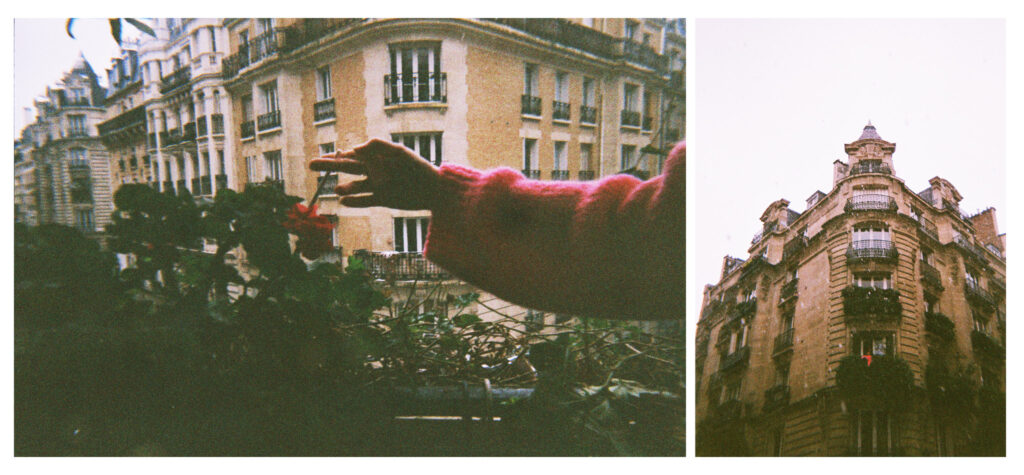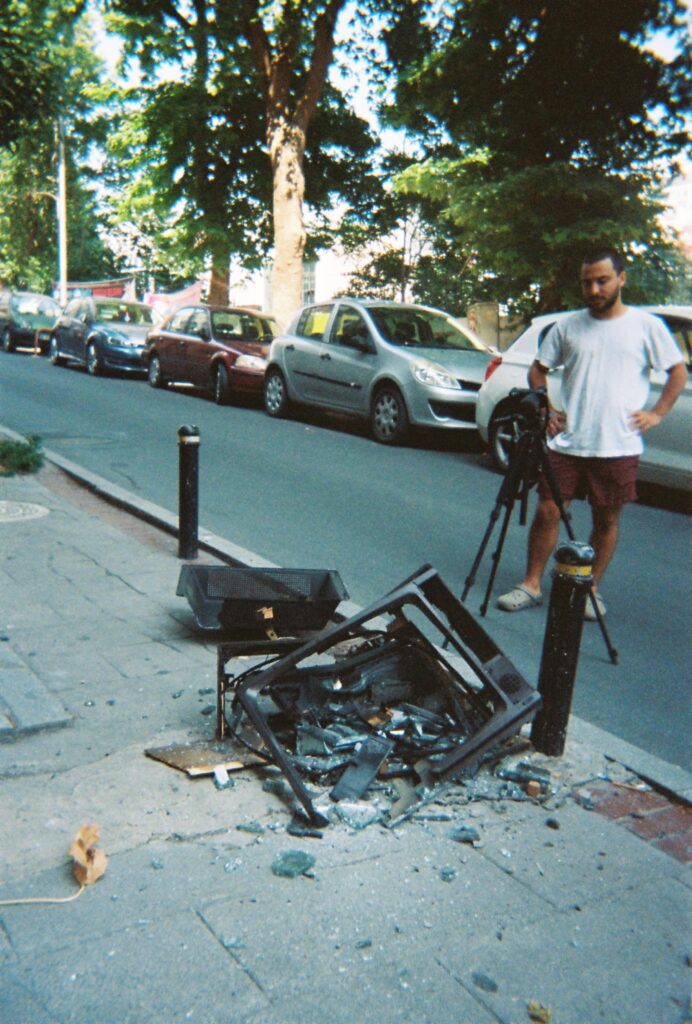Dear Grief,...
by Savina Petkova

On very rare occasions, I dream of films I haven’t seen. In these dreams, I am watching a sequence I know to be of that film, despite my steering away from any trailers, stills, or reviews, and that sequence is always of little narrative importance. Instead, it conveys the mood less with dialogue than with a distinct oneiric expression – of vibrant colours, protracted movements, and the inimitable conviction that everything – then and there – makes perfect sense. A Woman Escapes is one of those very few dream-guests, as I watched a 3D sequence from the side in the first row, in an auditorium so big that the pulsations of the screen felt both ominous and inviting. I had forgotten this, until the film itself made me remember.
In the film, Sofia Bohdanowicz, Burak Çevik, and Blake Williams each channel their own respective ways of reminiscing and forgetting through a trialogue between fictionalised versions of themselves. Here, communality and sharing never come as a given, but rather as a sought-after delight following a long and arduous struggle to give loss a material incarnation. One of the instruments to facilitate such a process is borrowing and from its very opening, the film does exactly that. Inserts from Bohdanowisz’s 2017 feature Maison du Bonheur grace the screen in between long-lasting blue-screened pauses both as a commemoration and a marker of what is lost, now that the ‘star’ of the earlier film, Juliane, has passed away.
Sofia returns, but this time as Audrey (played by collaborator and on-screen double Deragh Campbell) and her soothing voiceover is laconic, often plugging in lines from Bresson’s A Man Escaped verbatim. This sheer narrative line is both a tribute and a wish-fulfilment, that salvation is indeed possible, if only with cinema as a life vest when one’s lost at sea. Audrey’s verbal presence may be intermittent and often cut short, but her corporeal being is one of gradual dissolution, it seems. Her body is stretched between the house – its rooms and its trinkets – and her laptop, home of Blake and Burak’s video letters. Grief liquifies, when it’s not immobilising. In a way, Audrey is becoming one with the Parisian apartment which offers its tight embrace: whether the washing room, the closet, the rose-bush adorned windows, the hallway, or a bed lined with its hefty blanket, every space can become a place of remembrance. Loss materialised,
this is it.

That very raw physicality granted to the house and only to it, is then abstracted into a dream, recounted again and again in the film, by different voices. It’s about two, possibly coexisting, versions of a house, divided by a roof that’s now gone. One imbued with all the memories of a lived life inside, the other has none. “Can it start all over?”, the protagonists ponder.
In fact, A Woman Escapes invents its own language in articulating that loss beyond the individual experience of it, it develops tripartite miniature of moving on together while apart. Sustaining such emotional encounters often results in hybridisation, and it’s only fitting that the film combines textures and formats, such as 16mm, 4K digital, both screen recording and a recorded screen, and most notably, 3D.

The 3D sequences may be the puncturing technique which stands out the most, with their hapticity and alluring invite to restructure an image’s depths together, but it’s worth mentioning that the film relies on another type of stoppage, organically embedded in its rhythm. Process before moving forward. Take a breath in the form of a blue screen that lasts a couple of seconds. Cut to black, more often, although sometimes, it’s purple; towards the end, cut to red. These colours linger as a respite from humans, or humanless images, while also posing an invitation to be consumed. In the screening room, you’d all be flushed with colour, your faces unilaterally painted with the coloured light bouncing off the screen. In these seconds in between, the audience is most aware of being an essential part of this projection. And if ‘projection’ means materialising an absence which is only present on the screen, it is also a word for ‘resurrection’.
A Woman Escapes is a shared exercise in remembering in order to forget. With its most knotty bits being the most intuitive to grasp and find solace in, it does not play out as straightforwardly remedial. No, its therapeutic qualities lay dormant during the most part of the film, because it personifies, through Audrey, Burak, and Blake, the prolonged while before grief is transformed into a task to be resolved.
Savina Petkova is a Bulgarian freelance film critic based in London, currently completing her PhD in film-philosophy at King’s College London. Her specialties include women’s cinema, human-animal geographies, memory studies, and the qualms of (European) identities.
–
All photography included above are behind the scenes photos of A Woman Escapes.